The de facto Haitian government’s first attack with exploding Kamikaze drones came on Mar. 1 when two of them wounded 16 people, two fatally, in Delmas 6, an area controlled by Jimmy “Barbecue” Cherizier, the leader and spokesman of the Viv Ansanm (Let’s Live Together) Political Party, formed from a coalition of armed neighborhood groups around greater Port-au-Prince.
According to him, only four of the victims were his soldiers, while the other 12 were area residents, some of them disabled.
“The second drone exploded by a house with both young and older handicapped people,” Haïti Liberté reported based on its interview of Cherizier after the event. “A total of 16 people were wounded, and two of them died later at the hospital from their injuries. Cherizier said he will organize funerals for them.”
A second explosive drone attack on Lower Delmas came Mar. 7. For days, it was unclear if it had caused any damage. Neither Haïti Liberté nor any other media was able to interview Cherizier for a first-hand account for three weeks.
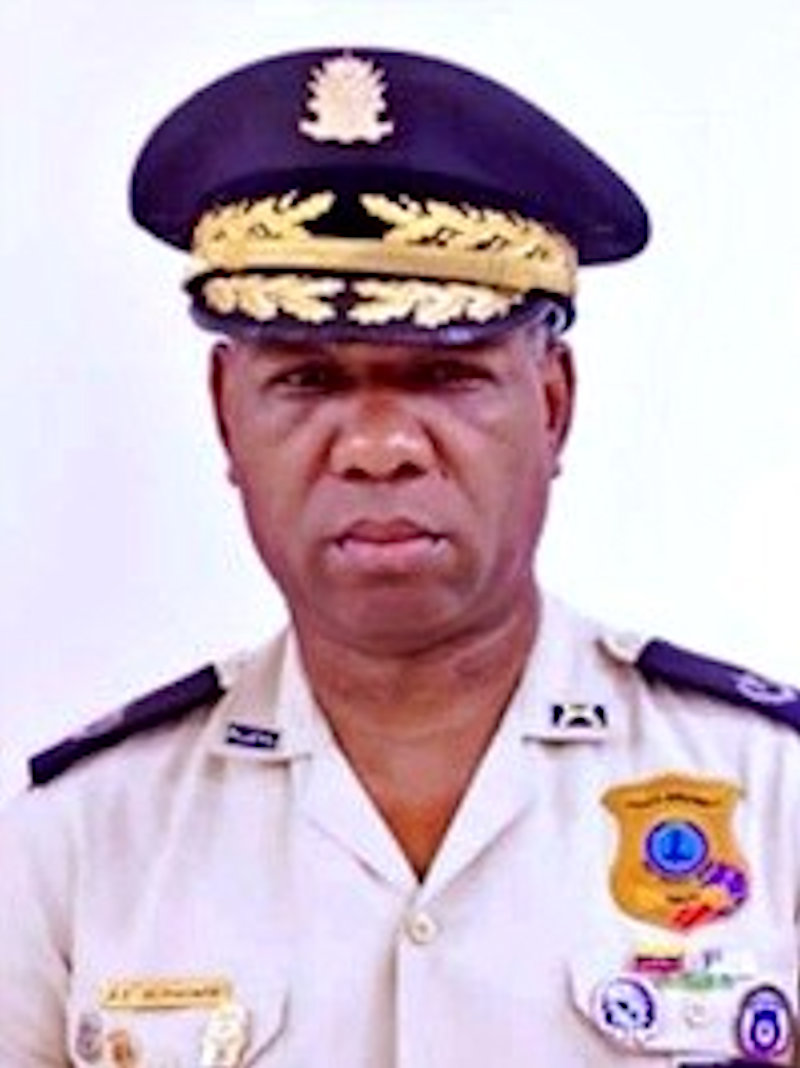
But on Mar. 30, his 48th birthday, Cherizier gave a 10 minute video message in which he revealed that the second attack “didn’t even hurt a fly.”
These first attacks were carried out by a “Task Force,” which was coordinated by Prime Minister Alix Didier Fils-Aimé in conjunction with the General Security Unit of the National Palace (USGPN) chief Vladimir Paraison, and Alain Auguste, the Director of the Central Directorate of Administrative Police (DCPA), a division of the Haitian National Police (PNH).
However, at that time, Fils-Aimé was having some kind of feud with PNH Chief Rameau Normil, hence Auguste was not acting under Normil’s direction but that of the Prime Minister.
But the U.S. Embassy and United Nations Office in Haiti (BINUH) issued statements saying they did not approve of “civilians” (i.e. the “Task Force”) carrying out the drone attacks, saying it should be done by the PNH, whose chief the U.S. government always must approve.
Hence, Washington ordered a shotgun wedding to reunite Fils-Aimé with Normil, Auguste was fired on Mar. 29, and Inspector General Arol Enol Alphonse was installed to replace him as the new DCPA Director, who controls the PNH’s operations, including drones. In short, the “Task Force” created by Fils-Aimé has been placed under PNH control.
Meanwhile, on Mar. 18, Press Lakay reported that a special police drone unit was being trained by Canada and would be housed in the U.S. Embassy in Tabarre, on the outskirts of Port-au-Prince.
“This is a unit of nearly 40 police officers, who recently received training in this area [of expertise] in Jamaica and Mexico,” PNH deputy spokesman Lionel Lazarre explained. “The Canadian government supported the initiative.”
Presumably, this training is part of Operation Helios, which the Canadian government announced one year ago to train CARICOM police officers who would join the Washington-financed Multinational Security Support Mission (MSS) in Haiti. However, Canada’s National Defense Ministry has never mentioned in its press releases that Operation Helios was training cops in drone warfare.
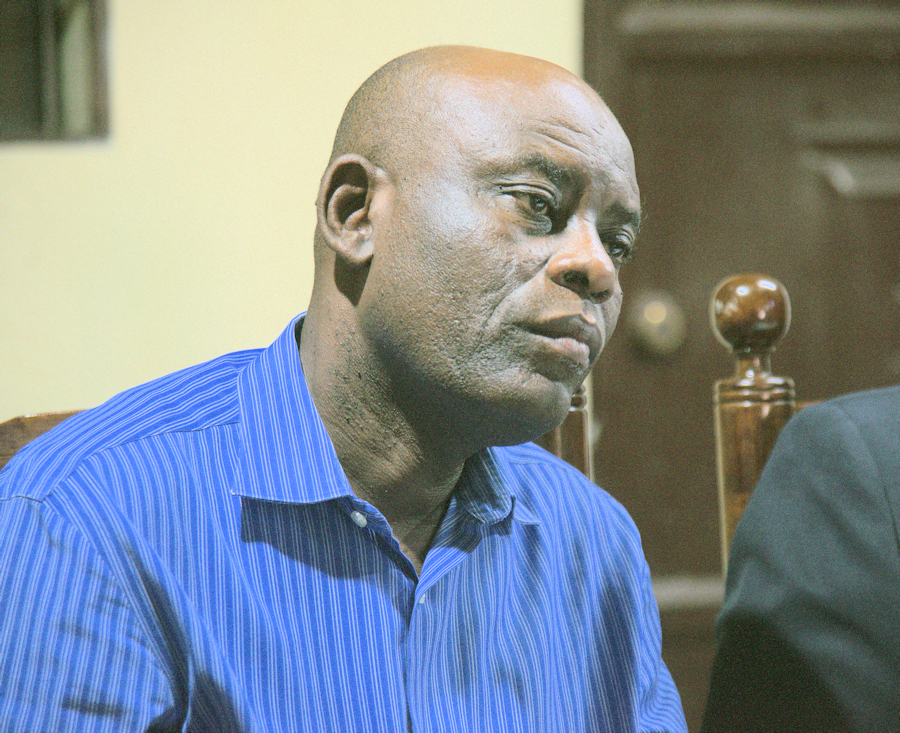
A Mar. 30, 2024 Canadian National Defense Ministry press release explained that “approximately 70 Canadian Armed Forces members deployed to Jamaica” to train CARICOM military personnel “on core peacekeeping skills and combat first aid – and carry out validation and integration exercises for CARICOM troops.”
A January press release explained that Canadian Armed Forces had been deployed to Jamaica to provide “the first mandatory training courses for approximately 300 members of the defense personnel of Jamaica, Belize, and Bahamas.” This training “covered a range of topics including the protection of civilians, conduct and discipline, and conflict-related sexual violence.”
But now Canada is also instructing a PNH unit to fly drones, whether it is under Operation Helios or not. Lazarre explained that the “training received by these dozen law enforcement officers… to maneuver explosive drones well… is supported by the American Embassy in Haiti,” suggesting that drone warfare has been planned for months and coordinated between the Canadian government, the U.S. Embassy, and the MSS.
Lazarre also said that “officers assigned to use the drones will receive ongoing training” because the equipment “is more sophisticated,” implying that the cops will work under the supervision of U.S. or Canadian military personnel in the U.S. Embassy from which attacks on civilian neighborhoods will be coordinated.
A week after the Press Lakay report, on Mar. 24, Le Nouvelliste published an article with a picture of Prime Minister Fils-Aimé, holding a drone control unit, laughing with PNH Chief Normil. The title asks: “Have Alix Didier Fils-Aimé and Rameau Normil Buried the Hatchet?”
The next day, Le Nouvelliste published an article saying that the PNH had “not received any drones from the Prime Minister’s office” and that the PM and PNH chief “jointly inspected a sample of new equipment that will be delivered to strengthen the police’s operational capacity.” The article did not report who is supplying the drones nor where they would be based.
The risk of flying and detonating explosive drones in densely populated civilian neighborhoods is obvious. But the U.S. Embassy and Haitian bourgeoisie have shown in the past that they care nothing about “collateral damage” among Haiti’s poor masses.
The risk of flying and detonating explosive drones in densely populated civilian neighborhoods is obvious.
“A prominent Haitian businessman and a top U.S. Embassy official urged UN occupation troops to attack a crowded Haitian slum, fully expecting that ‘unintended civilian casualties’ would occur, according to secret diplomatic cables provided by WikiLeaks to Haiti Liberté,” reads the lede to a 2011 article in that paper about the 2006 campaign against anti-occupation “gangs” in Cité Soleil.
The attack began “on Jul. 6, 2005, when UN troops mounted a massive assault on the slum, firing over 22,000 bullets in about seven hours and killing coup resistance leader Emmanuel “Drèd” Wilmer,” the article continues. “Of the 27 people who came to a Doctors Without Borders hospital with gunshot wounds that day, three-quarters were women and children. Cité Soleil residents told a labor delegation from San Francisco and journalist Jean Baptiste Jean Ristil that MINUSTAH had indiscriminately fired on their homes, killing women, children and infants. The death toll was at least 23, and possibly as many as 50, according to the delegation.”
Now, 20 years later, the PNH exhibits a similar disregard for the lives of civilians who happen to live in territory controlled by the Viv Ansanm’s armed groups. In May 2024, a PNH officer explained to France24 that they operate under the assumption that there are no civilians in impoverished neighborhoods. “We don’t need to know if they’re armed or not,” the policeman explained. “We just fire.”
The PNH’s persistent, under-reported war against the poor masses has led to a mounting number of civilian deaths, including children.
Until now, Ottawa’s covert training of Haitian and MSS cops to conduct drone warfare in Port-au-Prince’s densely populated neighborhoods is a tacit endorsement of this tactic. Perhaps, then, it shouldn’t be surprising that many U.S. and Canada-funded “human rights” groups endorse suicide drone warfare.
Pierre Espérance, the director of the discredited National Network for the Defense of Human Rights (RNDDH), “applauded” the exploding drone strategy and shared his hope that “fear is setting in among criminal groups.”
He made these comments after asserting (apparently incorrectly) that the Mar. 7 drone attacks “caused at least 20 deaths” although he “was not able to say whether there had been victims among the population.”
The RNDDH is indirectly funded by the Canadian government. In the past, they have also received funding from the National Endowment for Democracy (NED), widely known to be a CIA cut-out.
Suicide drone warfare is also supported by other Haitian “human rights” groups, including the Open Eyes Foundation (FJKL), an RNDDH rival. In an interview with Le Nouvelliste, Samuel Madistin maintains that “as long as those responsible for enforcing the law respect the rules, the FJKL sees no harm in it.”
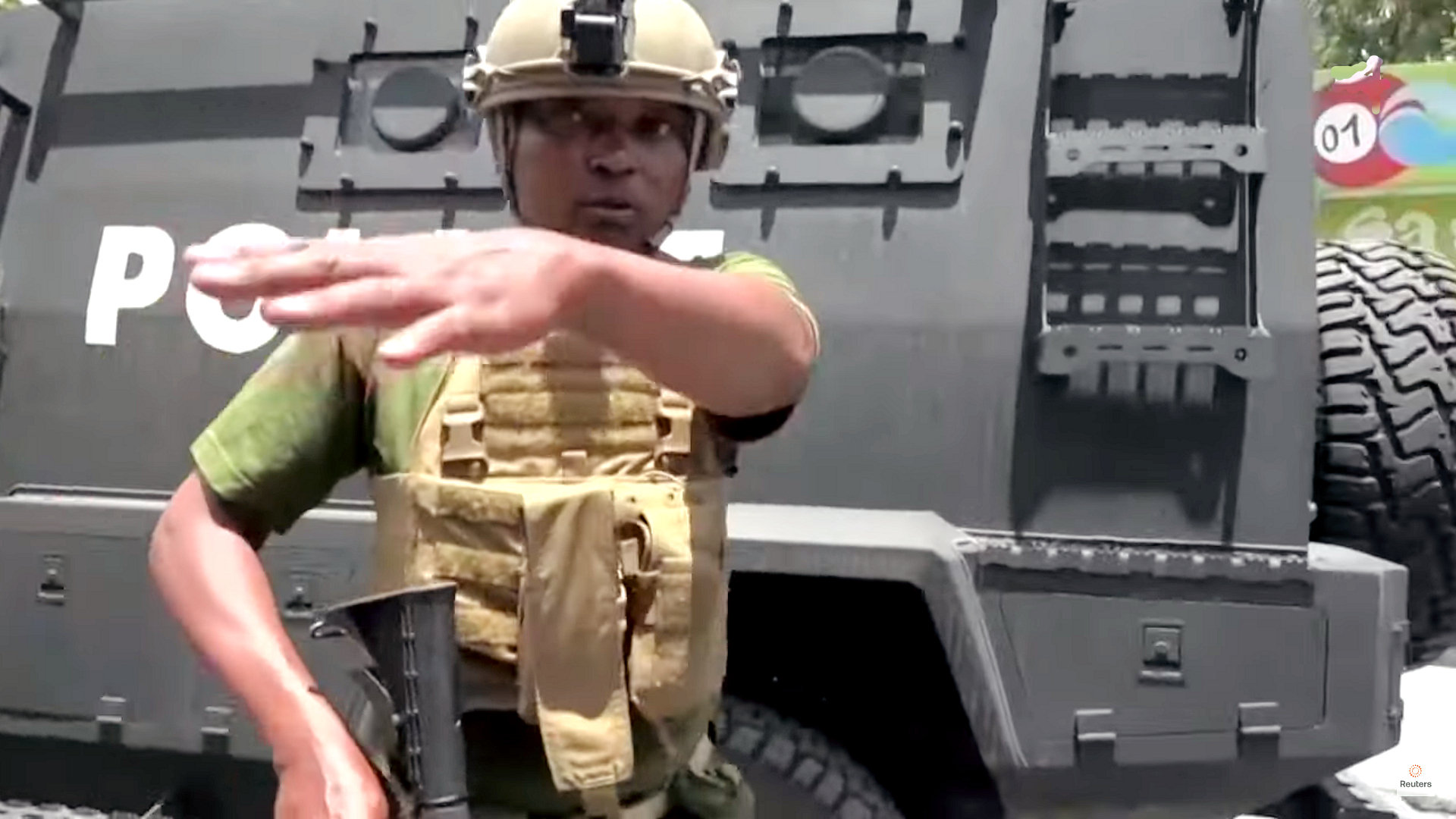
Madistin is a co-founder of FJKL, another discredited “human rights” group. A former politician, Madistin is the lawyer of Reginald Boulos, one of Haiti’s richest bourgeois oligarchs (and the leading bourgeois who pushed for the 2006 attack on Cité Soleil). A prominent founder and member of the NED-organized Group of 184 during the 2004 coup, Boulos stands accused of financially supporting paramilitaries to force Aristide from power in the 2004 U.S.-backed coup d’etat.
It should come as no surprise that Espérance and other members of Haiti’s bourgeoisie reject any dialogue with armed groups to end the cycle of violence. However, the bourgeoisie’s representatives in the interim government are willing to negotiate with armed groups for other matters.
According to Radio Pyramide, the Haitian government is conducting negotiations with armed groups in Savien in order to recover the remains of a Kenyan soldier from the MSS who was killed on Mar. 24 in the Artibonite Valley.
It speaks volumes that the de facto Haitian government may be negotiating over the remains of a Kenyan police officer but will not do so to quell the violence in Port au Prince.
Haitians living in territory controlled by armed groups are viewed as inevitable “collateral damage”
While this effort to collect the Kenyan police officer’s body seems to indicate respect, it has become apparent that Kenyan police officers are not supported or treated with dignity by those in authority.
So far, three Kenyan officers have died. Morale in the MSS’s Kenyan contingent is crumbling.
A recent article by the Nyakundi Report shared an interview with an anonymous source in the MSS. They said a “significant number of personnel” are requesting that they be allowed to return to Kenya, and that “morale has plummeted.”
The source blames low morale on “poor leadership”and the “negligence of senior commanders” while cops deployed to a base in the Artibonite Valley’s Pont-Sondé receive “one meal a day and have no bedding.”
Meanwhile, the U.S. and Haitian mainstream press are acting as stenographers for the occupation forces.
Haïti Liberté journalist Isabelle Papillon points out in a recent article about the deaths of two Armed Forces of Haiti (FAdH) officers in Delmas 30 that the larger media seems to have no motivation to uncover the facts behind the murders. “Everything the media is reporting is absurd,” she laments, arguing that there is an obvious cover-up, cloaked in appeals to patriotism and support for law enforcement. She cites testimony and evidence that the cops committed the murder and then blamed the deaths on Viv Ansanm.
Papillon also argues that the media narrative around Eliana Thélémaque is confused and unclear. Her two-year-old baby was allegedly thrown into a fire in Kenscoff by “gang members,” and then she herself died before she could be interviewed by the press or authorities. According to Papillon, the man who shared her story with the media was never interviewed by authorities either. Later he claimed that “it was not Viv Ansanm that killed the baby, but another Viv Ansanm… I’m sorry Barbecue.”
The constant humiliation and violence poor Haitians are forced to endure knows no end. Papillon reports that during the funeral for the two fallen FAdH soldiers, in an effort to pay tribute to the victims, fellow soldiers “fired live ammunition at the entrance to the cemetery” where a young man attending the funeral was “hit by a projectile and died instantly.”
The pro-occupation Haitian media’s refusal to corroborate stories extends to their treatment of Viv Ansanm spokesman Jimmy Cherizier. His full viewpoint and analysis of events are taboo to most such outlets, despite his centrality to Haiti’s situation today.
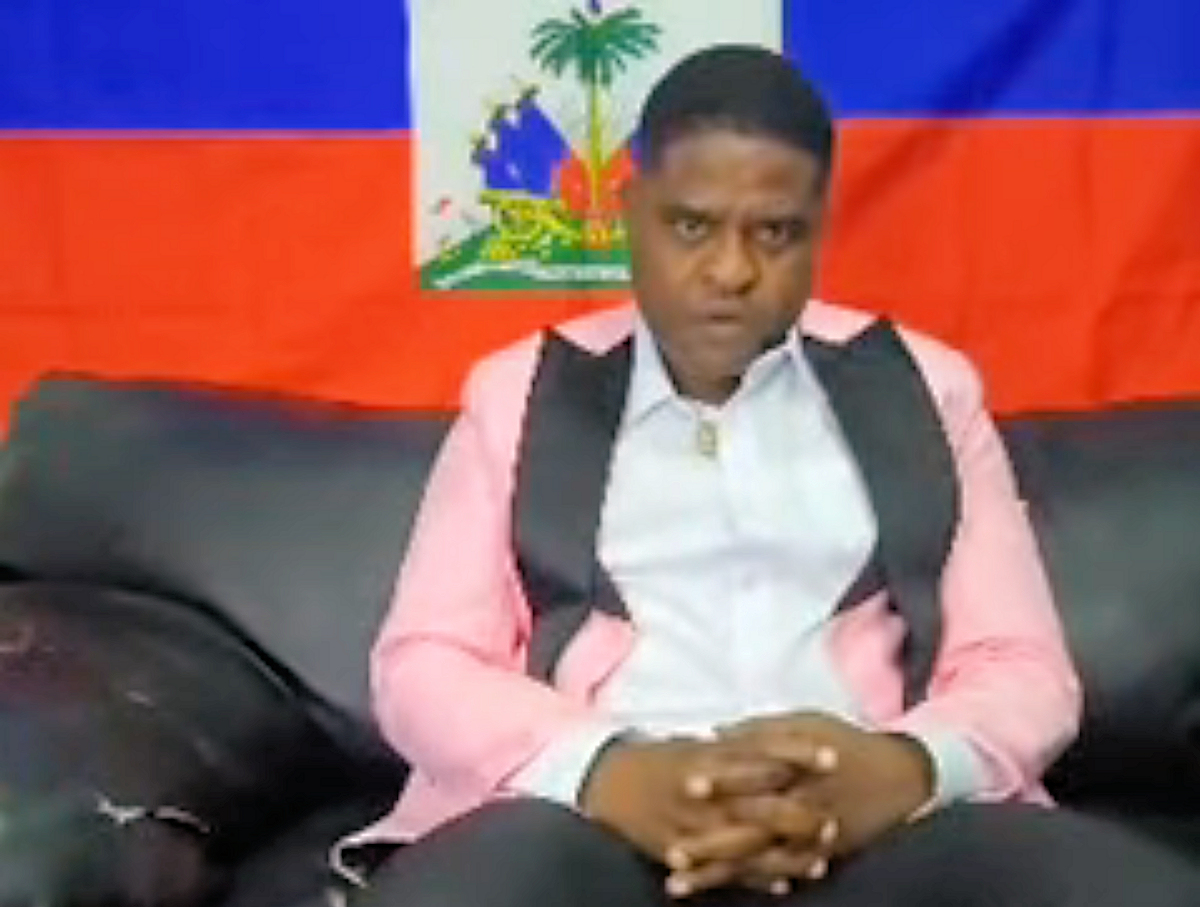
No media have investigated Cherizier’s statement that 12 civilians were wounded on Mar. 1 by the exploding drones, and that two died, and that some had physical disabilities.
The mainstream media’s lack of curiosity about whether civilians with physical disabilities were killed by controlled suicide drones suggests that the media simply does not care whether civilians were murdered. Haitians living in territory controlled by armed groups are viewed as inevitable “collateral damage,” their dignity and intrinsic worth as human beings lost in the calculus of appealing to the powerful for legitimacy.
At press time, no major outlet other than Haiti Liberté seemed interested in reporting on the murder of civilians with physical disabilities at the hands of a UN-blessed police force working in coordination with the U.S. and Canadian governments.
While these suicide drone attacks have failed to cause significant losses to Viv Ansamn forces, they risk increasing violence in Port au Prince. Following the attacks, Cherizier threatened to eventually retaliate once he acquires drones.
But despite his statement, Cherizier repeated his plea for negotiations. “The only thing that can extract Haiti from the hole it is in right now is dialogue,” he concluded. “Let us talk to each other and explain what we need.”
It seems for now, the Haitian bourgeoisie, with their U.S. and Canadian overlords, have chosen to pursue a terror campaign though suicide drone warfare on Haiti’s civilian population.
It is no wonder the de facto Haitian government has so little popular support.
Travis Ross is a teacher based in Montreal, Québec. He is also the co-editor of the Canada-Haiti Information Project at canada-haiti.ca. Travis has written for Haiti Liberté, Black Agenda Report, The Canada Files, TruthOut, and rabble.ca. He can be reached on X.

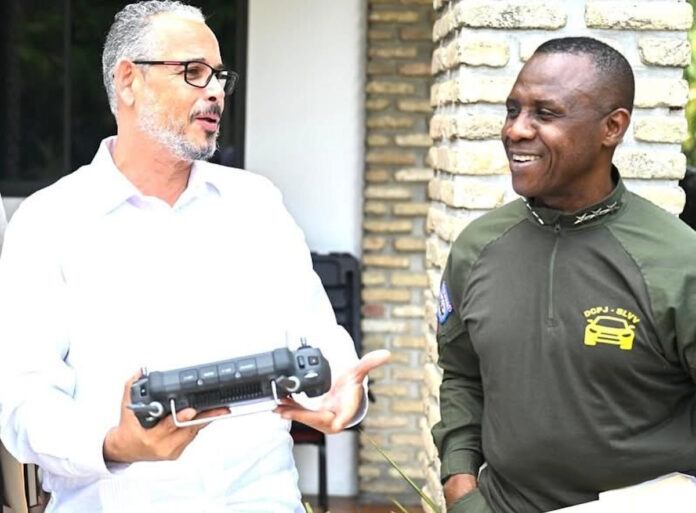









[…] Source link […]
[…] It will be the turn of the Organization of American States (OAS) to attempt a policy of “national reconciliation” in the coming days, because the bourgeoisie’s and government’s funding and arming of “brigades” to act as police attachés in fighting the armed groups of the working-class neighborhoods formed as Viv Ansanm has failed miserably despite the deployment of the MSS mercenaries and now Erik Prince’s BlackWater and the use of Kamikaze drones. […]
[…] It will be the turn of the Organization of American States (OAS) to attempt a policy of “national reconciliation” in the coming days, because the bourgeoisie’s and government’s funding and arming of “brigades” to act as police attachés in fighting the armed groups of the working-class neighborhoods formed as Viv Ansanm has failed miserably despite the deployment of the MSS mercenaries and now Erik Prince’s BlackWater and the use of Kamikaze drones. […]
[…] Bientôt, ce sera au tour de l’Organisation des États américains (OEA) de tenter une politique de « réconciliation nationale » dans les prochains jours, car le financement et l’armement par la bourgeoisie et le gouvernement de « brigades » servant d’attachés de police dans la lutte contre les groupes armés des quartiers populaires formés sous le nom de Viv Ansanm ont lamentablement échoué, malgré le déploiement de mercenaires du MSS et maintenant de BlackWater d’Erik Prince, et l’utilisation de drones kamikazes. […]
[…] Council (CPT) along with Prime Minister Alix Didier Fils-Aimé, whom it appointed, an end to the Attaques de drones explosifs des forces de policeet pour les États-Unis, la France et le Canada pour arrêter l’ingérence en […]